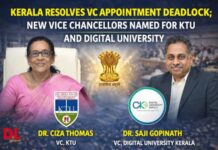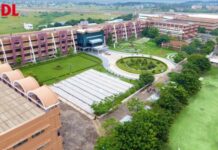
Next-generation classrooms and learning models represent a new approach to education that leverages the latest technology to enhance the learning experience. These new models are designed to be more interactive, personalized, and engaging, allowing students to learn at their own pace and in their own way. By reimagining the role of technology in education, these models seek to address some of the challenges facing traditional classrooms, such as limited access to resources, rigid curriculums, and a one-size-fits-all approach to teaching. With the help of technology, next-generation classrooms and learning models are transforming the way students learn, making education more accessible, inclusive, and effective. A very exciting panel discussion around the topic happened at 25th Elets World Education Summit. Edited excerpts:
Jeff Evans, Principal, Global English School, Al Ain, UAE (Moderator) shared, “The subject of discussion is the “Next Generation Classrooms and Learning Models: Reimagining the Role of Technology in Education”. Over the past few years, there has been a significant shift in how students and schools utilise technology, both inside and outside the classroom.”
Robert Wang, MENA Director of Smart Vertical Development, Hikvision shared, “The education sector has always been at the forefront of utilizing technology, and this has become especially apparent during the epidemic. There has been a significant shift in the use of technology in education both before and after the pandemic. As an example, during my recent trip to Turkey, I learned that high-education universities no longer require students to attend classes in person. Instead, students have the option of participating in online learning and teaching, while still receiving certifications and graduating.”
“Even after the pandemic, people have continued to use the technological tools that were adopted during the pandemic, such as Zoom and hybrid online courses. I remember when the pandemic first began, we quickly implemented thermal screening solutions for students to protect their health. Instead of manually recording temperatures on paper, we utilized cameras to automatically recognize temperatures and combine them with students’ names and attendance information. This system allowed us to collect all the necessary information in a more efficient and automated way.”
“Another interesting case I encountered was at a Chinese School in Dubai, where they required dual classrooms with the same teacher teaching in two different rooms. To accommodate space requirements for each student, they split the students into two classrooms but used one screen to synchronize the content. While the teacher was teaching in one room, the image of the teacher was also projected in the other room. Students provided live feedback to the teacher through the screen, creating a live classroom experience. This hybrid approach to teaching and learning could be used in any classroom, whether in Dubai, London, or Mumbai, ushering in a new era of education.”
Supriya Sehgal, Head of Section (Primary & Middle), New Indian Model School, Dubai, UAE shared, “When it comes to technology, we need to have a simple mindset. Just like how astronomers and astronauts both talk about stars, they have different perspectives. Similarly, Educators may know about technology, but they need to act like astronauts and learn how to use it effectively. We need to work towards helping our teachers transition from being astronomers to astronauts and using technology not just as a tool, but as a means to shape and support students who need it.”
“In the institution where I work, we have students and parents from different backgrounds in the same class, and we need to consider all aspects of their situation when implementing technology. For example, we turned our corridor walls into learning walls by replacing boards with printouts related to our curriculum standards, and we included a small QR code on each wall. This allows students to access the information using their own devices or our devices, and we also teach them about device usage and cybersecurity. It’s the responsibility of all stakeholders to work together to ensure that technology is used wisely and adds value to education.”
Bushra Afreen, Head of Academics, Cloud British Private School, Sharjah, UAE shared, “There are numerous instances that exemplify the post-pandemic era and the impact it has had on education. Before the pandemic, most educators were unfamiliar with the use of educational technology tools and were forced to experiment with them when faced with no other option. The integration of technology into classrooms became essential for learning during the pandemic, and thus it was embedded into the curriculum.”
“This technological shift was a boon for students and educators worldwide, who adapted to the new way of learning. However, there were still many parts of the world, such as sub-Saharan Africa and some Asian countries, where access to technology was limited, resulting in a digital divide. Despite this, educators stepped up to help bridge the gap, volunteering to bring internet access to remote areas and ensuring that education was not compromised at any level.”
Aradhana Rana, Director, Icon Public School, Maharashtra, India shared, “People often mistake technology for what they have achieved after the pandemic. The knee-jerk reaction to the pandemic allowed people to cope and perform well, but it was just a wake-up call. Technology is much more than that; it is a tool that opens up minds to the future.”
“She mentioned a cartoon from 40 years ago that talked about a cell phone as a thing of science fiction, yet today, we all use cell phones. Technology changes lives over time and will affect our lives even more in the future. To prepare for this future, classrooms need to be changed to incubators of innovation and experimentation so that children can do what computers cannot do. The speaker’s goal as a school leader is to prepare students for the future, imagining what the world will be like in 30 years when the current first-graders will be ready to start their careers.”
























